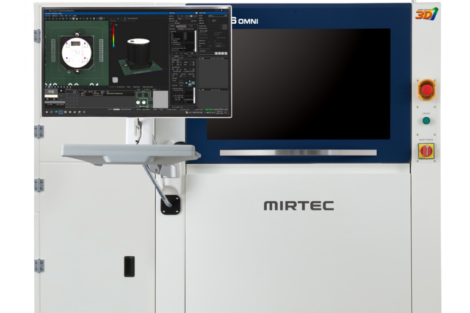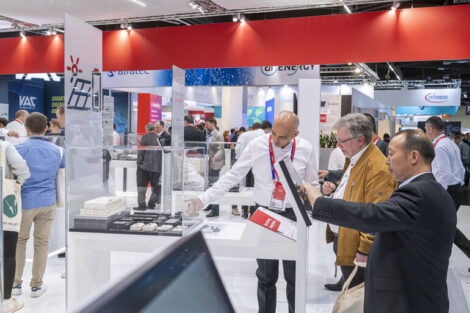Regardless of the industry, electrical contact lubricants are used to enhance the performance and reliability of electrical contacts and connectors. Originally invented in 1941 for improving the electrical performance and reliability of volume controls by Electrolube’s founder, the use of contact lubricants has spread far and wide into many different industries and has been a critical factor in the dependable performance of automotive components for decades.
Improving electrical performance
Contact lubricants are specially formulated greases and oils, designed to reduce friction and wear and enhance electrical performance of current carrying metal interfaces, such as those found in switches and connectors. As no metal interfaces are entirely even and smooth, when applied to such surfaces in thin films, they fill in all surface imperfections, in turn improving contact and electrical performance as well as prolonging the contact life by reducing hot spots, frettage and arcing.
By filling in the air gaps between the contacts, contact lubricants dramatically increase the effective surface area, in turn preventing arcing and the related temperature rise and oxide formation. They also provide a barrier to airborne contamination and reduce the effects of friction by facilitating smooth movement. In addition, the use of contact lubricants is typically evaluated for their ‘feel’ characteristics, improving the quality of movement of a switch or in simple plastic-plastic contacts, for example.
Whether the application is for interior components, such as air conditioning ventilation flaps; exterior components such as side mirror adjustments; or on critical contacts within the wiring harness; the applications for contact lubricants are ever increasing in line with the advancements in CASE technologies (Connected, Autonomous, Shared, Electric).
Preventing failures in electrical systems
There are 3 main ways in which contact lubricants are used in automotive applications:
1. To improve electrical transfer and reliability of the contact
As already discussed, contact lubricants increase the contact surface areas by filling any gaps and reducing electrical resistance. Technology has spread into more safety critical operations within vehicles and with automotive recalls due to electronic components on the rise, it is imperative that these safety critical connections are maintained correctly. In a recent report by AlixPartners, it was detailed that recalls to correct failures in electronic or electrical systems have grown 30 % a year in recent years. Such failures include issues with software and software integration; however, the vast majority of recalls are actually because of failures related to integrated electrical components.
As an IATF 16949 approved electro-chemical solution provider, Electrolube is often asked to help prevent such issues from occurring. The company also fully understands the impact that such failures can have on businesses, with costs coming from all areas, including the effect it has on brand reputation for the automotive manufacturer. It is therefore extremely important that all aspects of electronic systems are considered, including the connection between devices and the correct selection of a contact lubricant.
The electrical performance of a contact lubricant is usually evaluated by measuring the mV drop of the contacts/switches over a specified number of cycles. This is usually in excess of 20,000 usage cycles. The performance of various contact lubricants can vary depending on the formulation and intended end use. For example, some materials have a more stable low mV drop over a large number of cycles but compromise on their plastics compatibility.
In other cases, the application may have the requirement for a particular consistency of contact lubricant, in combination with good electrical properties. A ‘stiffer’ or ‘harder’ grease may be selected in order to stay in place during the mechanical action of the switch. In such cases, the cone penetration at different temperatures or wear testing of the lubricants may assist in product selection. Conversely, a very soft grease or a contact oil may be required in applications where there is a very low contact force and, in such cases, the mechanical action of the switch should be tested with a range of lubricants to determine suitability. It is therefore important to consider all electrical requirements, material compatibility and environmental influences when choosing the correct lubricant.
Traditionally, the improvement in electrical properties of switches and connectors in vehicles was focused on low voltage switches and moved on to more critical applications, as the development of electronic applications progressed. With a change to EV’s, a further increased set of challenges has been posed, including more electrical connections and most notably, much higher voltages being transferred around the vehicle. With experience in industries such as medium and high voltage switchgear, electroplating and relays, Electrolube has a range of products to meet the demanding requirements of the electric vehicle market.
2. To reduce the effects of external influences, reducing corrosion and wear
Acting like the central nervous system of the vehicle, the wire harness contains many connections to facilitate the communication of a multitude of devices. Due to the complexity of the electronics applications within a vehicle, the harness also accounts for a lot of weight. This has led to different materials being used, such as aluminium and in some cases, differing metals could be used within the same harness. Whilst reducing weight, there are also other challenges with using aluminium, including the formation of hard oxide layers and electrochemical corrosion in the presence of moisture and differing metals.
Contact lubricants can be used to protect freshly mated contacts being exposed to the environmental conditions, but this is only part of the problem. During the lifetime of these contacts, corrosion caused by fretting is common and the use of a contact lubricant to prevent the exposure of any base materials on contacts or aluminium parts can greatly reduce failure rates of contacts and connectors.
Environmental influences can include temperature changes, humidity exposure and corrosive atmospheres. Changes in temperature can affect the consistency of the contact lubricant, for example, a lubricant may have a cone penetration value of 320 at 25 ºC but when exposed to temperatures of -40 ºC or lower, this value may significantly reduce, resulting in a much harder consistency of grease.
Humid environments are also common, and most contact lubricants will withstand high humidity for prolonged periods. When high humidity is combined with corrosive environments, differences between products can be realised. Electrolube has designed a series of tests to illustrate these differences and provide further assistance with correct product selection. These tests include wetting humidity followed by salt mist tests, chlorine resistance tests and consideration of different contact materials.
The combined humidity and salt mist testing subjected the lubricants to 90 % humidity at 35 ºC for 3 weeks, followed by 1 week at 35 ºC in the salt mist chamber. The protection of copper and steel substrates was visually evaluated after this test. Typically, the synthetic lubricants, such as Electrolube CTG, provided the best protection in this environment. In addition to this test, gold and silver contacts protected with various lubricants were also subjected to the salt mist environment. Results further strengthened previous findings, highlighting that some mineral based lubricants in particular are not suitable for protecting these materials in harsh environments. Finally, as an extreme test, an oxidative environment containing chlorine was created and maintained at 35 ºC for 2 months and results again showed that the CTG provided exceptional protection, closely followed by Electrolube CG53A and CG60.
3. To improve the quality, feel and insertion force/operation of connectors and switches
Contact lubricants are also widely used in many applications to improve the ‘feel’ of a switch, thus giving the impression of high quality. This is also true for many applications within the interior of vehicles, ensuring that metal-metal, plastic-metal and plastic-plastic contacts alike have a good connection between parts, thus reducing noise and movement when subjected to vibrations caused by the normal operation of the vehicle. With a move towards quieter vehicles, improvements in tyre technology and the future with EV’s, the vehicle interior is a much quieter place to be and as such, the quality of these contacts and overall noise dampening is essential to ensure a high quality driving experience is achieved.
Products such as the CG60 and SPG have been used for such automotive applications for many years and are suitable for futureproofing the interior of vehicles, ensuring the upmost of comfort in the driving experience. In some cases, a fluorinated lubricant, such as Electrolube’s EGF, may be required to offer greater performance in these areas and particularly in the case of reducing the insertion forces when mating connectors.
This again leads to a discussion about the wire harness and with the increase in number of electronic components and connectors as EV’s are discussed in further detail. The need for lubricants such as Electrolube’s CG60, CTG or EGF for improving manufacture and in-use protection is also greatly increased. In fact, in a study by Research and Markets, it is reported that based on component, the connection of electronics within vehicles via wire harnesses is projected to witness the fastest growth up to 2025. This is due to the development of advanced technologies in the automotive field, including driver assistance systems and safety features.
Challenges for electrical connectors
The automotive industry is in a period of constant change and evolution. By switching to HEV’s and EV’s, a new set of challenges for electrical connectors, switches and devices are being put forward and will also continue to evolve for years to come. Developments in battery technology and user interfaces, alternative fuel sources, and the ever-expanding autonomous driving market, will all add to these challenges. By addressing the seemingly small task of ensuring high quality, reliable and protected connections, contact lubricants will assist in meeting these new demands.
The EV powertrain is on average two and a half times more expensive than conventional powertrains, leading to cost being another barrier for growth in this market. This cost will naturally come down over time with economies of scale and improvements in technologies. Due to the combination of the reduced overall costs from the maintenance of high quality levels as well as the reduced vehicle recalls from connector failures, manufacturers need to have the choice of contact lubricants high on their development agendas, now and for many years to come.
Microscopic examinations of contact surfaces reveal ‘peaks and troughs’, therefore only the peaks touch when the two surfaces come together. The current carrying surface area is greatly reduced, which causes heat to be generated and oxide layers to be formed. Hot spots are created which reduce the efficiency of the switch and can result in complete failure should the two surfaces weld together.
Air gaps present between the contact surfaces can become ionised and the associated temperature rise can cause metal transfer between the contacts. This results in the formation of new peaks and troughs, increasing the surface roughness of the contacts. Arcing occurs as mini lightning strikes and leads to oxide formation and destruction of the plated contacts.
Connectors and closed contacts are exposed to small amplitude movements caused by vibration and temperature changes. As the surfaces fret, friction causes metal particles to be removed from the higher points on the surfaces of the connector, breaking through the plated surfaces. This exposes the underlying surfaces to the effects of oxidation and wear.
Source: Electrolube
Die Automobilindustrie befindet sich in einer Zeit des ständigen Wandels und der Entwicklung. Entwicklungen in der Batterietechnologie und bei den Benutzerschnittstellen, alternative Kraftstoffquellen und der ständig wachsende Markt für autonomes Fahren stellen neue Herausforderungen an elektrische Steckverbinder, Schalter und Geräte.
L’industrie automobile traverse une période de changements permanents et de développement. Les progrès de la technologie des batteries et des interfaces utilisateur, les sources de carburant alternatives et l’essor constant du marché des véhicules autonomes constituent de nouveaux défis pour les connecteurs, les interrupteurs et les équipements.
Автомобильная промышленность претерпевает постоянные изменения и развивается. Разработки в области аккумуляторных технологий и пользовательских интерфейсов, альтернативных источников энергии и постоянно растущий рынок систем автономного вождения ставят новые задачи перед электрическими разъемами, переключателями и устройствами.
Electrolube
Ashby Park
Coalfield Way
Ashby de la Zouch
Leicestershire
LE65 1JR, United Kingdom
Tel.: +44 1 530 419600
E-mail: info@hkw.us.com
Website: www.electrolube.com













